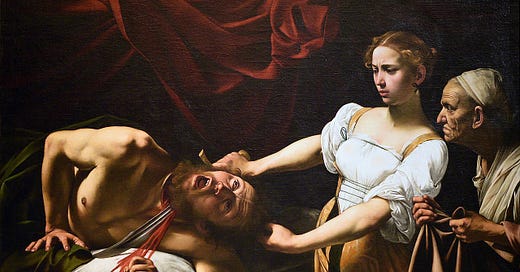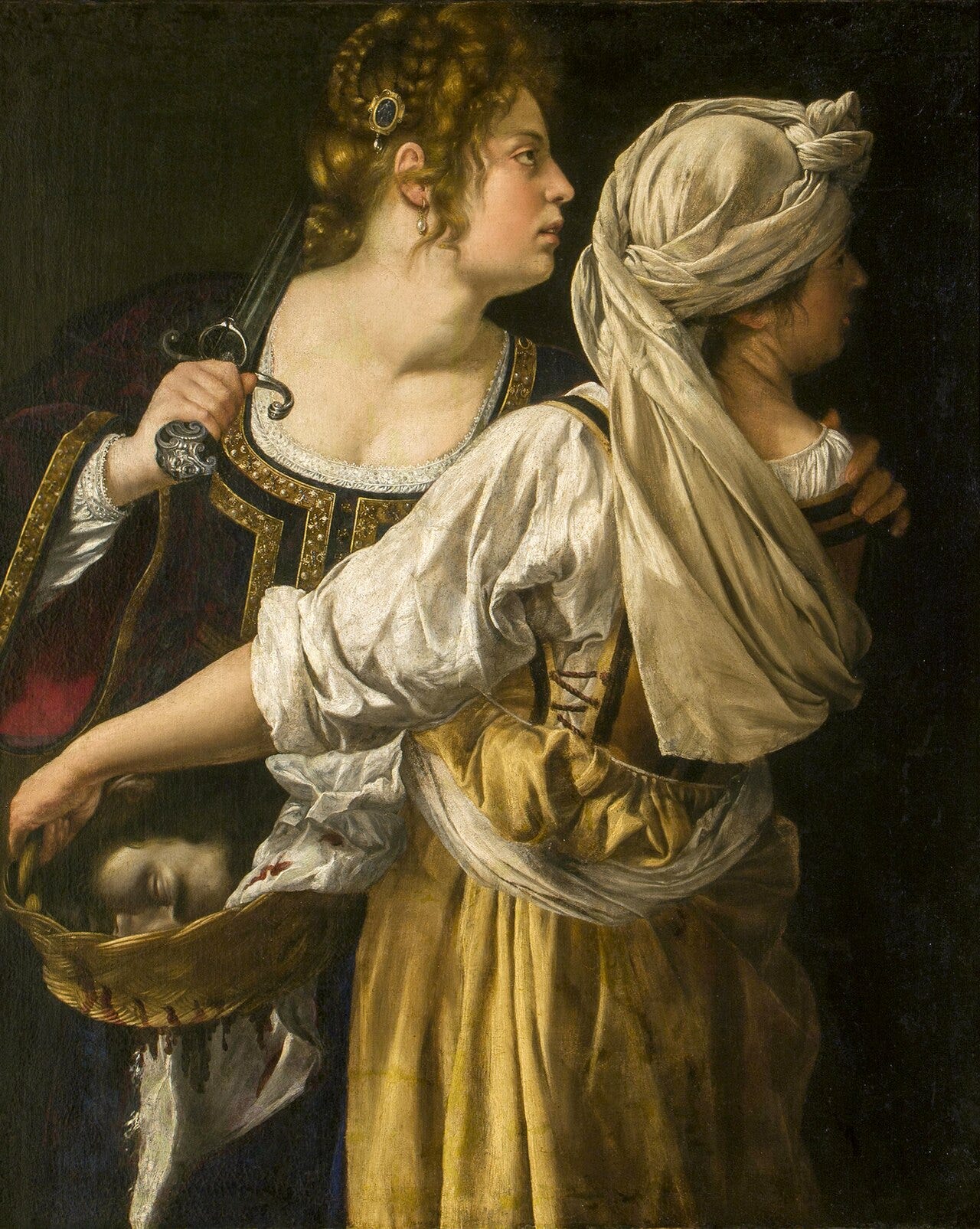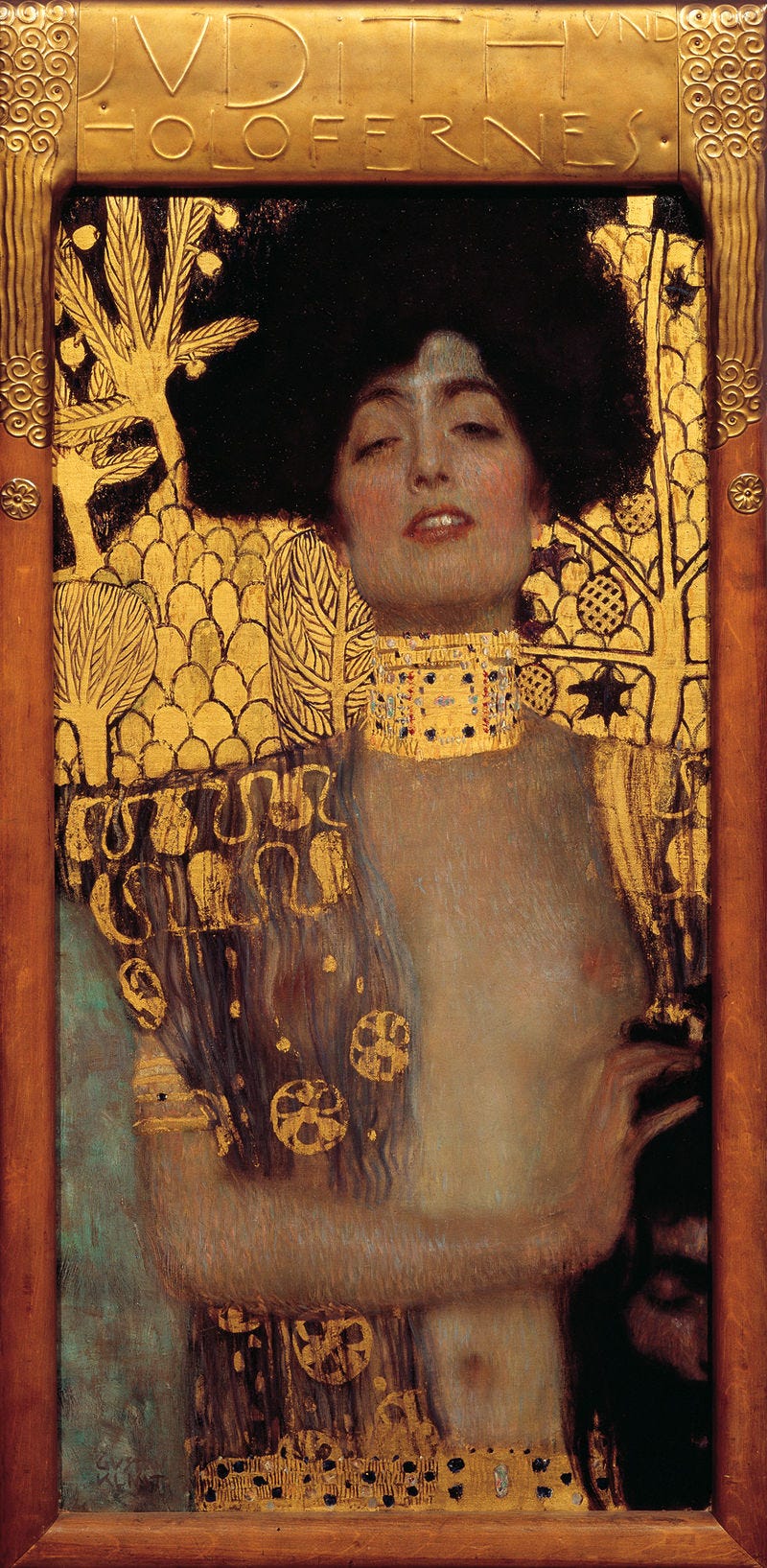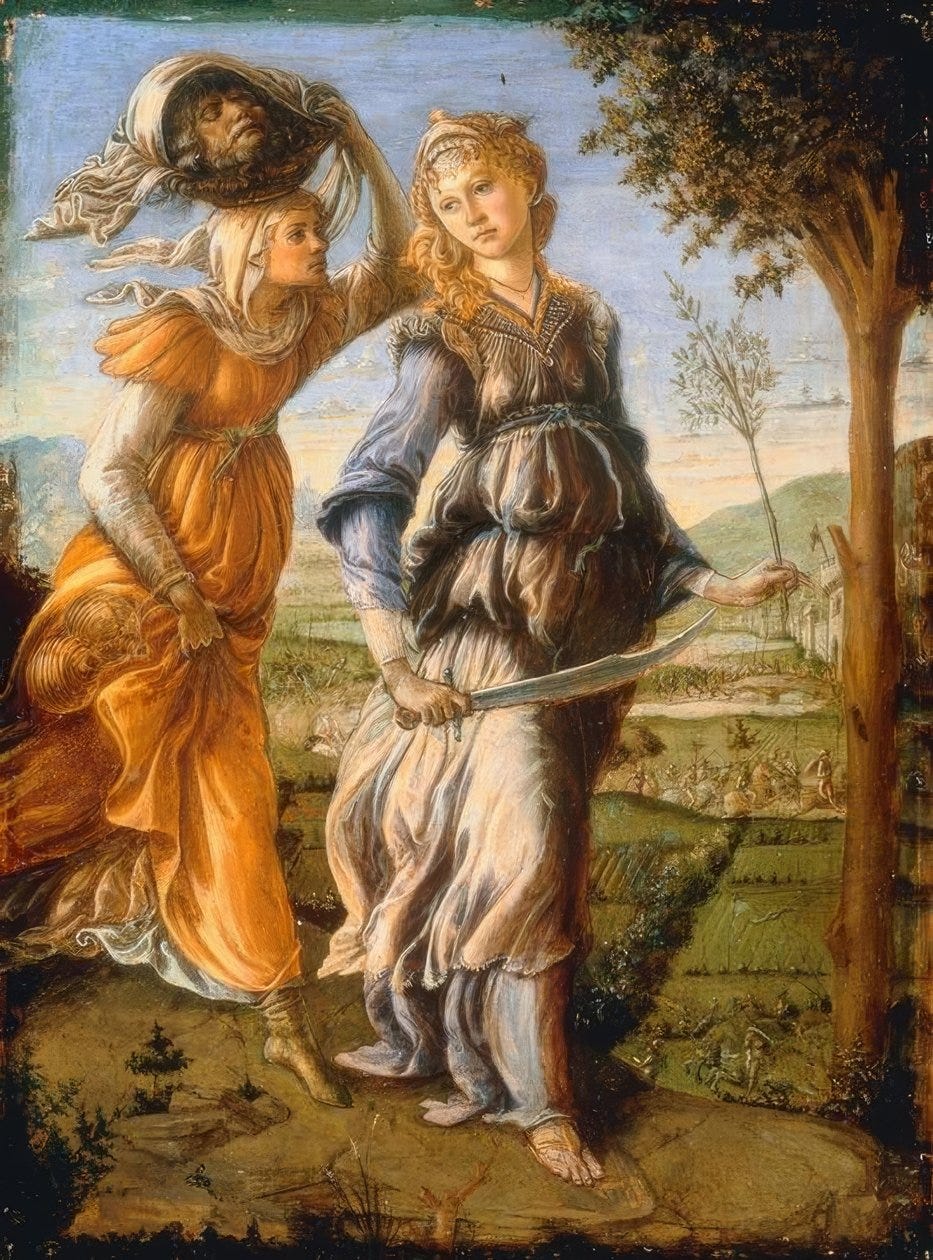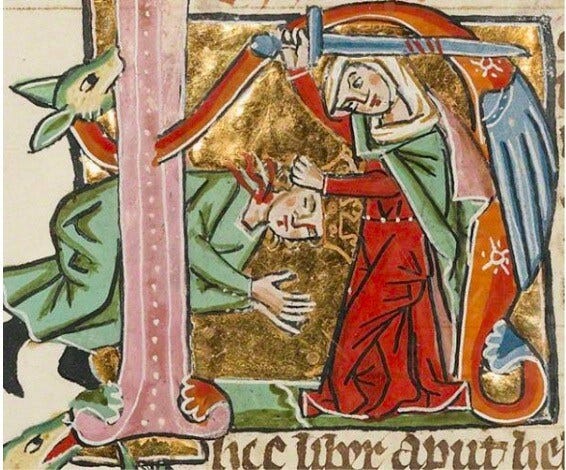Judith, leadership without permission
Deception. A woman's job, if you believe the Old Testament. Delilah took down Samson for her people. Jael invited a warlord in for milk and nailed him to the floor. Michal, Esther, Tamar, even Eve. All of them played the game, but all with strings attached. One stands out because she pulls her own strings. Judith. Independent. The Old Testament rarely lets women drive. But Judith does. She makes the call. Widowhood means freedom. No man, no rules, just her. She is not mourning. She is planning. Fasting by day, plotting by night. Her husband died and her fear died with him. Like Janis Joplin sang, freedom is just another word for nothing left to lose. Judith knew.
Jacob van Swanenburg, The Siege of Bethulia 1615
The year is bleak. Bethulia is gasping, choked by an army camped outside for weeks, cutting off food and water. The soldiers are restless but sure, playing a waiting game they know they will win. Their commander, Holofernes, was a piece of work. Brutal, ambitious, swaggering. Convinced of his power, drunk on his own certainty. He did not negotiate. He did not need to. In his head, the city had already folded.
The men debated and delayed, afraid of failure, tired of fear itself. Judith was tired of the noise, tired of watching indecision. She had no more patience, no more shits to give. She leveraged her freedom and weaponised her beauty, put on the finest silks, painted confidence on her face, and brought her maid to help tie up the loose ends. She had fasted, prayed, and waited long enough. She knew the stories of others waiting for miracles. This time, she was done waiting. She decided to be the miracle, loud and clear.
Setting the trap
Léon Comerre, Judith, end 19th century
She steps into the tent. Holofernes, drunk and swaggering, never sees the trap. Her maid hovers behind her, steady and silent. Two women, one man, one plan. Judith knows exactly how they see her. Pretty, breakable, irrelevant. She uses that. That is her angle. Her hand brushes the sword and she thinks. Nobody expects this. Perfect.
Clean Execution
Caravaggio, Judith Beheading Holofernes, 1599
Steel is stronger than flesh. For one breath she feels nothing. The drunks outside still laugh. Holofernes' eyes snap open, panic flooding in. Her face is flat, detached. But you can see the disgust creeping in. She did not expect to feel this. This was supposed to be clinical, neat. He thrashes, gurgles, and for a second she almost pulls back. But she remembers why she is here. Her mind snaps to steel. Finish the job. Blood everywhere. Cold, hard focus. And somewhere beneath it, surprise that she is still human enough to feel.
Wrapping It Up
Artemisia Gentileschi. Judith and Her Maidservant, 1613
The head is heavier than expected. No flinching. They wrap it like a secret. Outside, the generals are still laughing. No idea. She thinks. They will never believe this. That is the power. Calm, sharp focus. Maybe this is who she was all along, beneath the prayers and rituals. She feels a flicker of revulsion, but also a quiet, cold pride. It is done, she had done it.
*Sidenote: Artemisia Gentileschi, maybe the only known Baroque female painter had her own reason to paint this story. You’re not ready for that story.
Walking Away
Gustav Klimt. Judith I, 1901
As she continues walking, she feels lighter. The weight of the head is nothing now. It is proof. Her eyes gleam. The silk, the jewels, the blood on her skin, part of the uniform. She feels alive in a way that should feel wrong. But it does not. Pride starts to fill her, steady and cool, and with it comes confidence. She knows she will carry this moment forever. Beauty was the trap. Strategy was the blade.
Show and Tell.
Sandro Botticelli. The Return of Judith to Bethulia, 1469
She walks back into the city. Silence first. Then gasps. Then awe. The men who did nothing and doubted, the women who prayed, the children who feared. She does not smile. She does not need to. The head lifts. Proof in flesh and bone. She thinks. Let them see. This is what freedom looks like.
The Reveal.
Francesco Solimena. Judith Showing the Head of Holofernes to the People, 1730
On the steps, holding victory for all to see. The crowd roars. They will never really understand. Judith is not legend. She is logic. Control wrapped in silk. Ruthless and clean. She feels nothing but the snap of a plan executed. Cold, sharp, final. She walks away before the echoes fade, numb from the experience, relieved that what needed to be done is done.
Outside the generals fell silent, the laughter gone, replaced by fear and whispers. Leaderless and panicked, the soldiers broke ranks and fled. Their confidence shattered along with their commander.
She turns from the steps, and realises she did not only lose her husband but also something else, some tether to grace, some thread cut by her own hand.
Epilogue: Doing the right thing, and what it costs
Unknown artist ca 1300
The greatest painters in history could not leave Judith alone. The contrast was irresistible. Silk and softness hiding cold resolve, beauty masking brutality. They painted her over and over to prove something, that grace and power could live in the same frame, that a woman could deal. A story powerful enough to be painted for centuries.
And for me, it is a reminder. Doing the right thing is not always the right thing. Sometimes it leaves you cold. Sometimes it cuts threads you did not even know you held. I think know that feeling. Times when doing what was best left me feeling distant. Making decisions that worked out, but drained the spontaneity and joy.
